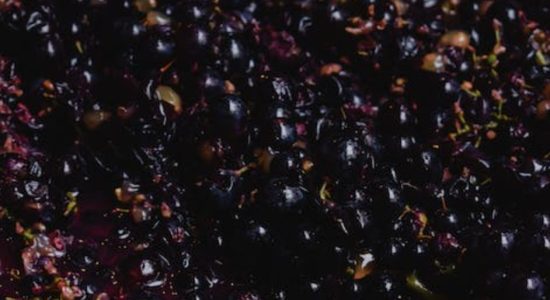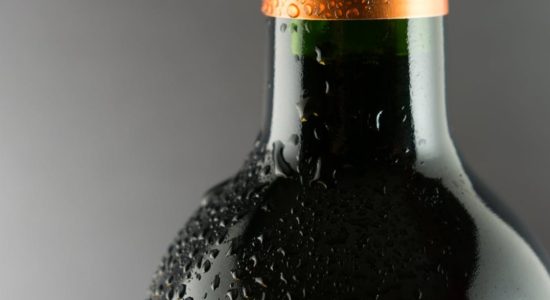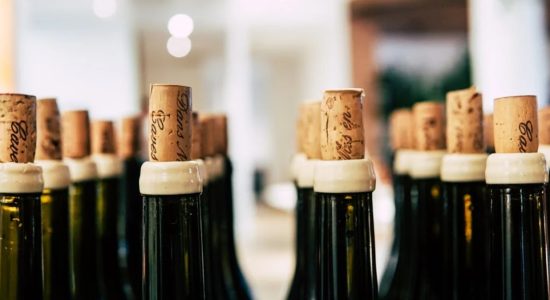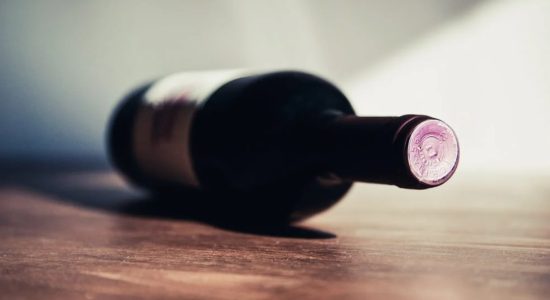How Much Sugar To Add When Making Wine? (Do It Correct)
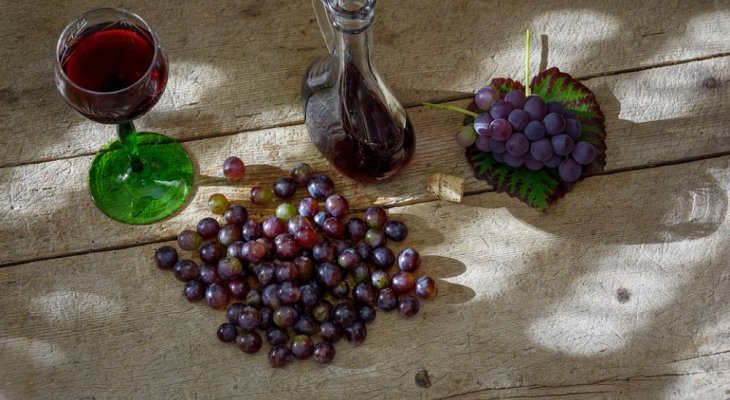
The perk of making your own wine at home is that you get to make it how YOU want to. Controlling the sugar, and therefore, alcohol levels are no exception to this. Want to learn how much sugar to add to your delightful wines? Read on!
How much sugar should you add when making wine? Generally, 1.5 oz of sugar will make one gallon of wine by 1 Brix. However, fruits with a higher sugar content can get by with 2-3 pounds of added sugar per finished gallon.
Of course, there is much more to this than just adding a couple of pounds of sugar to your must.
Read also: 7 Best Wine Coolers
Getting into Detail: How Much Sugar to Add When Making Wine
If you’re an avid at-home-winemaker, you’re aware that the alcohol in your wine comes from the sugar you add to it. Adding sugar to your crushed grapes creates the fermentation process in the juice. This process of adding sugar to your wines is called chaptalization.
Interestingly enough, this chaptalization process is done in certain locations of the world where grapes aren’t developing the levels of sugar needed to reach a standard alcohol percentage, which is 12-14% in wine.
This alcoholic fermentation takes place when the yeast metabolizes a sugar source, which can take the form of sucrose, glucose, or fructose and turns in into ethanol (alcohol) and carbon dioxide.
NOTE: Chaptalization is actually banned in some countries as well as in the State of California.
Riper grapes will have higher sugar levels, but if you find that grapes aren’t as ripe, you will add sugar to aid the fermentation and finally achieve your desired alcohol percentage or level.
Now, if you’re looking to achieve a wine you want to preserve and age wholely, you’ll need to create a wine with a rather high alcohol content, which means more sugar.
In order to ensure good concentration, the minimal alcoholic concentration in your wine should be 14%, though you can definitely make wine that approaches 18% in alcohol content.
We’ll get to high alcohol wines in a bit.
To achieve a 14% alcohol content in your wine you can calculate how much alcohol content your finished wine should have by calculating the Brix. This would be a rough calculation for how much you should add to your wine musts.
Read also: Best Wine for People Who Don’t Like Wine
What is Brix and How to Calculate it When Winemaking
Ever glanced at a wine bottle tech sheet? If you have, then you probably already came across the word “Brix” more than a couple of times. Brix also comes with a number after it like, for instance, 19.5 up to 26 some of the time.
Brix or °Bx is how the potential alcohol content of wine is measured before it’s made. This is done by determining the sugar level in grapes. Knowing this, you’ll know how much more sugar you should add to your own wines when making it at home.
Remember, each gram of fermented sugar will turn into a half gram of alcohol. Knowing Brix is interesting because different winemaking techniques will make an effect on the alcohol content you end up with.
Helpful Brix Chart for Alcohol Potential
Keep in mind that Brix corresponds with the potential alcohol content for a dry wine. If everything goes well in the fermentation process, the Brix-to-alcohol should look something like this:
| BRIX | POTENTIAL ALCOHOL |
| 14 | 7.6 |
| 15 | 8.2 |
| 16 | 8.8 |
| 17 | 9.5 |
| 18 | 10.1 |
| 19 | 10.8 |
| 20 | 11.5 |
| 21 | 12.2 |
| 22 | 12.9 |
| 23 | 13.6 |
| 24 | 14.4 |
| 25 | 15.1 |
| 26 | 15.9 |
| 27 | 16.7 |
| 28 | 17.5 |
How to Chaptalize Your Wine
Right off the bat, we know that chaptalizing wine is the process of adding sugar to the must.
This entire process is fairly simple. It consists of adding sugar to your must before the fermentation process begins. It will be easier to add it before fermentation so that you can achieve an accurate gravity reading.
Other winemakers will add sugar during fermentation, but when opting for this, you will need to make your own calculations to determine what the final alcohol content will be.
Wondering what type of sugar you can add to your wine? Well, your sugar additives can take many forms, from brown sugar, plain white table sugar, molasses, honey, raisins, and so on. In commercial wineries, they add sugar in the form of concentrated grape juice or granular sugar.
When you have your choice of sweetener in hand, mix it in completely and make a chemistry reading. After this, it’s time to inoculate the yeast in order to begin fermentation.
The Drawback of Adding too Much Sugar to your Wine
Watch out. When you end up overburdening the must, this will result in the overwhelming the yeast and resulting in a challenging fermentation process to start. The yeast won’t know what hit it.
If you’ve just started experimenting with sugar in winemaking, I would advise you to start with smaller amounts (one-gallon recipes), so that you don’t overdo it. This way, you ensure that the sugar amounts you’re adding are small enough and won’t interfere with the yeast in a negative way.
When making small batches of wine, try adding sugar at once during the primary fermentation. This should not be the case when making larger batches.
When making larger batches of wine, from 5-6 gallons, you’ll need to proportionately add larger amounts of sugar, logically. This is when you need to be prudent. A good rule of thumb for these cases is not adding more than 3 lb. of sugar per 1 gallon (depending, of course, on your calculations).
If you’re still in doubt of how much sugar to add, you can use a nifty chaptalization calculator to get your numbers just right.
REMEMBER: calculators work with their own algorithm and even then, you might not end up with the wine taste or alcohol content you expect.
It’s all about experimenting with your recipe.
Read Also: Best Wine Making Kits 2020
Adding Sugar to Reach a High Alcohol Percentage
1. Getting the Right Yeast Strain
It will be important to keep in mind that each yeast strain will have a max amount of alcohol it tolerates. When making wine, you’ll need to ensure your chosen yeast can handle the alcohol percentage/level you’re looking to achieve.
Do some research to get your hands on the best winemaking yeast you can find, so that during every step of the way you avoid throwing out an entire batch of wine – and all your hard work.
If you’re looking to achieve a 16-18% of alcohol percentage your yeast selection is critical.
Also, don’t forget that chaptalizing wine will not make your wine sweeter. Sugar will only add to its alcohol content. If you’re looking to finish your wine on a sweet note, you have two options:
- Stop the fermentation process. Which is a fairly difficult process of a home winemaker, although not completely possible. This will be done at your own risk.
- Sweet the wine after the fermentation process ends. This is the preferred method if you’re still an amateur winemaker.
2. Feeding Sugar Throughout the Fermentation Process
If you’re interested in boosting the alcohol level and have found a yeast that can tolerate this, you can feed the sugar throughout the fermentation process as a means of not overwhelming the yeast.
For instance, you can add just enough sugar during the beginning to get fermentation started.
Then, as fermentation slows down, you can feed your wine more sugar until all the sugar your recipe calls for has been added. As another option, you can add sugar to the fermentation until the yeast has reached the limit.
3. Using a Wine Hydrometer
If opting to feed sugar to the fermentation, you might need a handy wine hydrometer (Amazon link) to keep track of things. Once the Potential Alcohol reading is nearing zero, this is an indication to add more sugar to the fermentation.
Once added, the sugar will raise the reading and the fermentation will ferment until towards zero in the reading once again.
This entire process can go on for a few rounds depending on how much sugar you want to add and once the yeast quits. Keep in mind that without a wine hydrometer, this entire process of feeding sugar throughout fermentation can be quite risky.
Without it, you may end up adding sugar to a wine that has simply had enough and fermentation has slowed due to the yeast giving up. This will result in a sweeter wine than you might have expected.
TIP: If you’re fairly an amateur with chaptalization, make sure you count on devices that will help you keep your reading straight and avoid issues.
The Bottom Line
Winemaking is a learning process and a lovely one at that. Getting your recipe, desired alcohol content, and combinations right is all part of the journey.
One thing’s for sure, every at-home-winemaker achieves success at some point, so keep trying. Happy chaptalization!
Read Also: Best Propane Burner For Homebrewing



